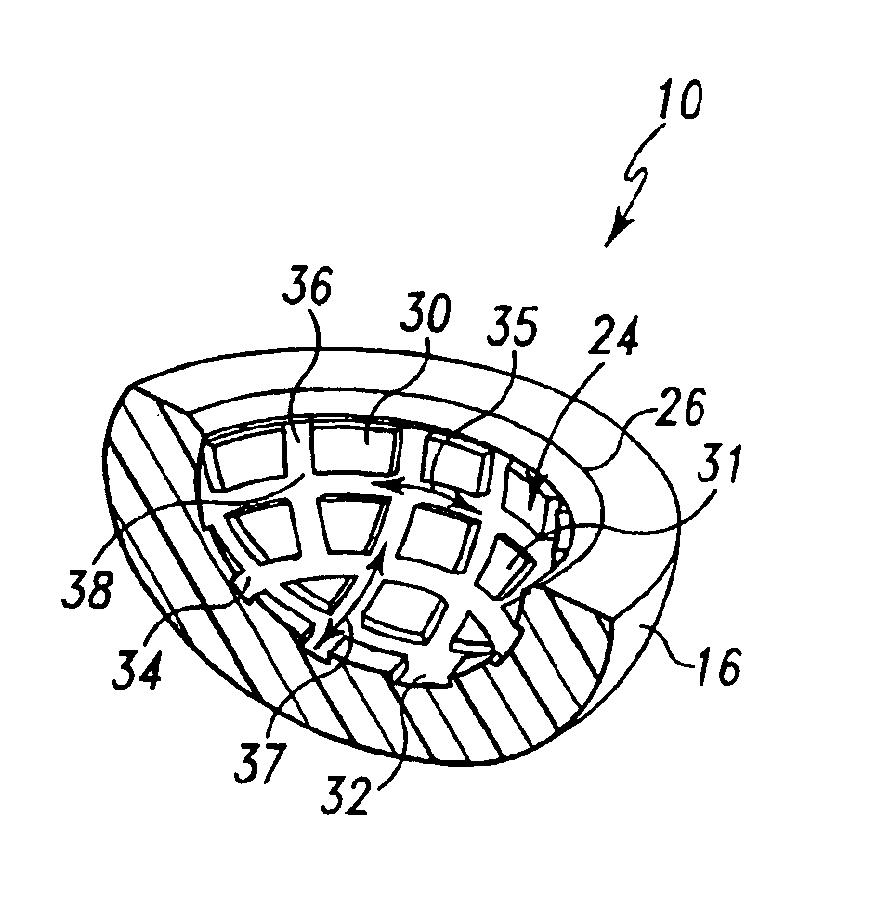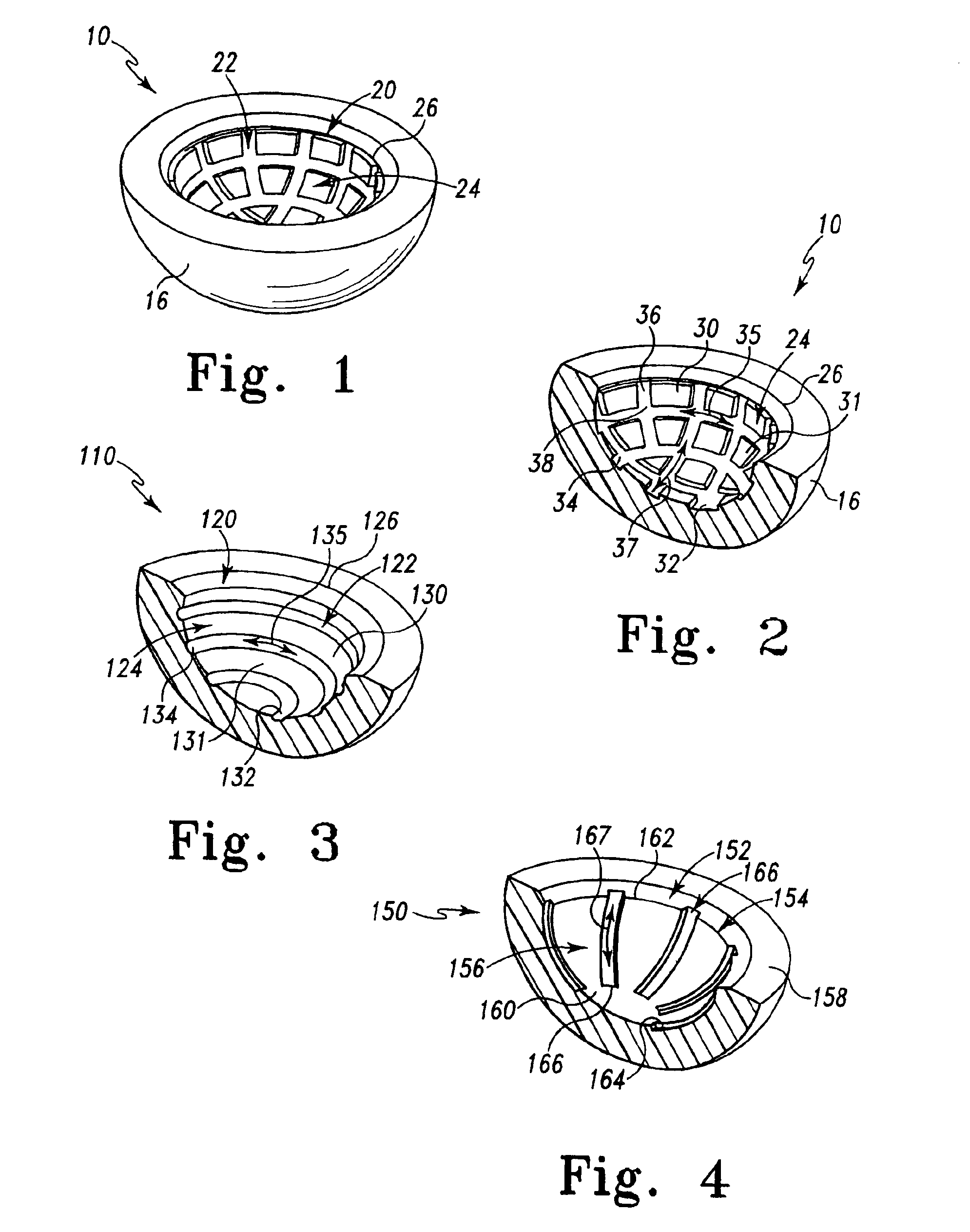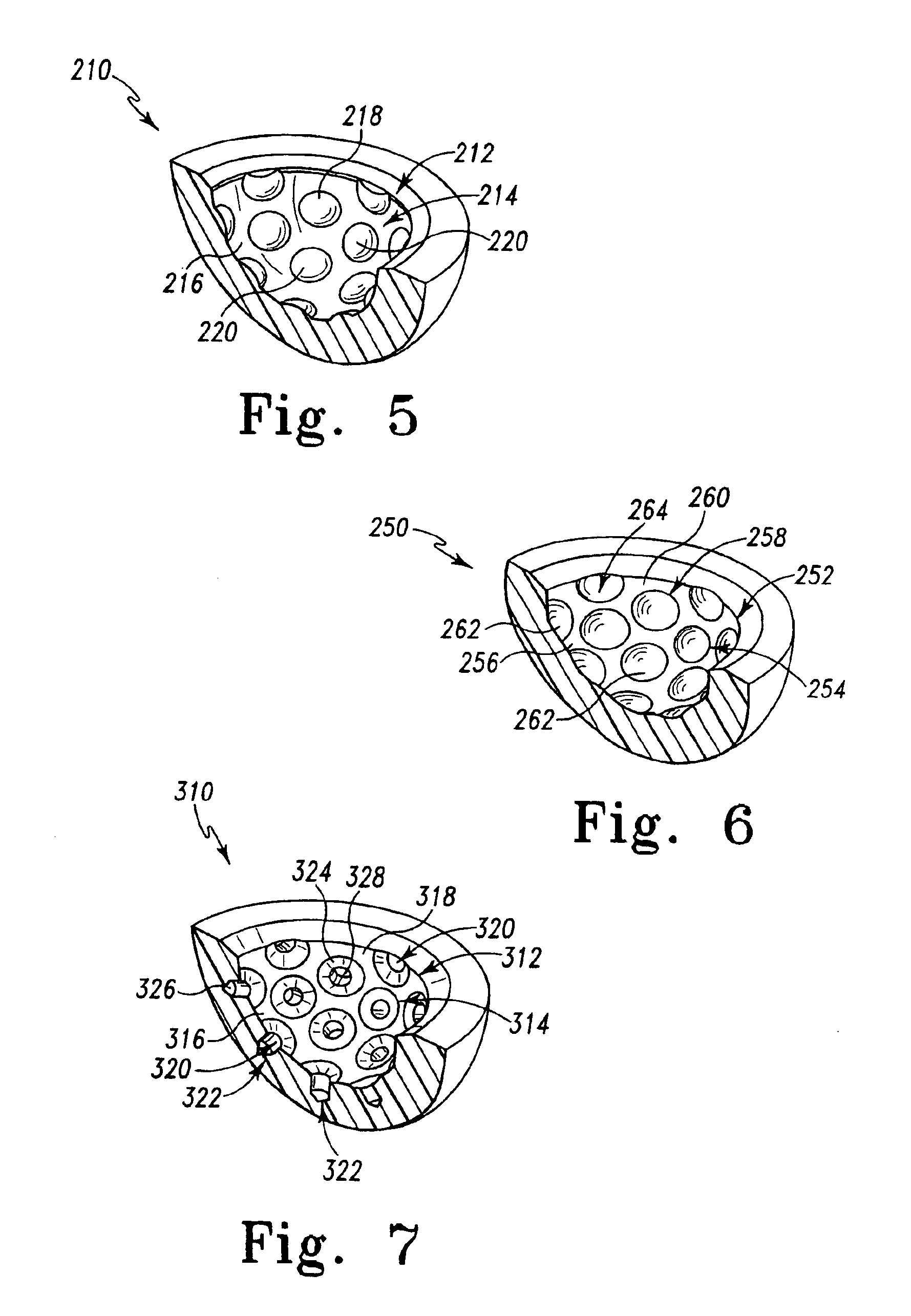Prosthetic joints having reduced area bearing surfaces and application thereof to a range of sizes of prosthetic joints
a technology of prosthetic joints and bearing surfaces, applied in the field of prosthetic devices, can solve the problems of reducing wear, affecting the function of prosthetic joints, so as to reduce the potential for dislocation, reduce contact area, and increase the range of motion
- Summary
- Abstract
- Description
- Claims
- Application Information
AI Technical Summary
Benefits of technology
Problems solved by technology
Method used
Image
Examples
Embodiment Construction
The subject invention is based upon a hypothesis and resulting principles that a prosthetic assembly having a bearing component with an articular face, interrupted by either recesses or protrusions, minimizes production of joint debris created by the interaction between the articular face and an accompanying joint face articulation component. This decrease is believed to be the result of the reduction in available surface area of articulation between the components, in comparison with traditional bearing components having smooth uninterrupted articulation faces. In accordance with the principles of the subject invention, one or both bearing components allow utilization of, for example, a large ball diameter for enhancement of joint stability while increasing lubrication and minimizing the production of undesirable joint debris.
It has been found that it is possible to provide intentional interruptions in the articular face of a prosthetic component through the application of lubricat...
PUM
 Login to View More
Login to View More Abstract
Description
Claims
Application Information
 Login to View More
Login to View More - R&D
- Intellectual Property
- Life Sciences
- Materials
- Tech Scout
- Unparalleled Data Quality
- Higher Quality Content
- 60% Fewer Hallucinations
Browse by: Latest US Patents, China's latest patents, Technical Efficacy Thesaurus, Application Domain, Technology Topic, Popular Technical Reports.
© 2025 PatSnap. All rights reserved.Legal|Privacy policy|Modern Slavery Act Transparency Statement|Sitemap|About US| Contact US: help@patsnap.com



